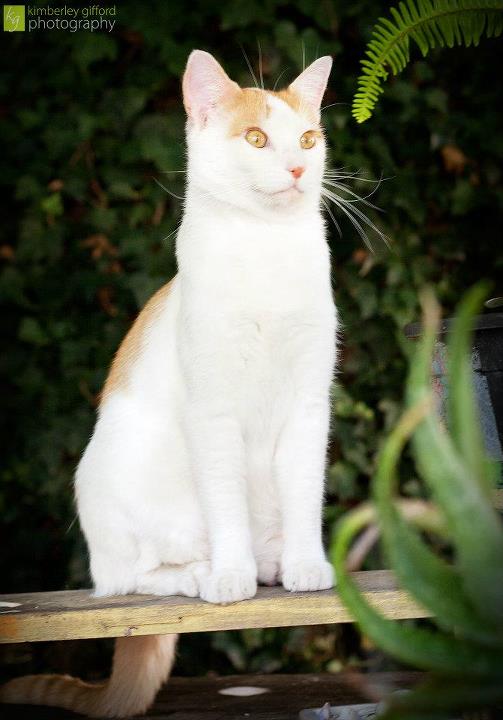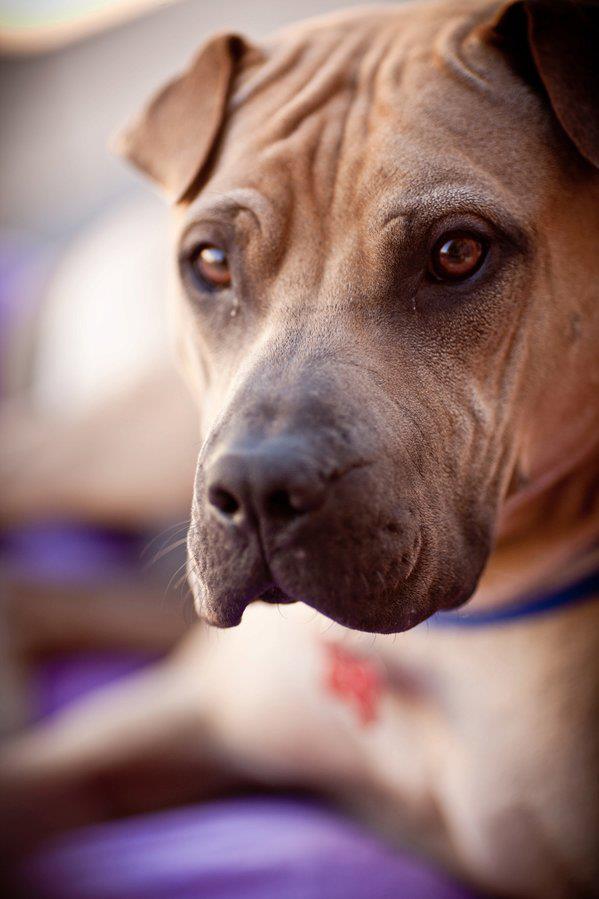Often, we hear about ‘the overpopulation problem‘ – the myth that there are too many animals in the shelter system to find homes for. Of those that argue that an overpopulation problem exists, they often point to shelter-euthanasia rates. The argument goes that if there was no overpopulation problem, then there would be no pets killed in shelters.
I call bullshit.
There are plenty of pounds in Australia that impound animals, hold them for the mandatory holding period, and then kill them with not a scrap of community engagement. They didn’t try to find the owner. They didn’t try to find a new owner. For whatever reason, there are many facilities in Australia that just do what they have to do (legally), and not what they should do (morally).
So what should impounding facilities be doing?
I argue that impounding facilities need to do each of these marketing and promotional steps for every animal in care, in order to get animals out alive.

“That’s absolutely my dog!” said no one ever. This is a genuine impound photo from an Australian pound – not very useful.
On Impound
Take a good photo and use it
When an animal comes into the facility, they should take a clear and appealing photo. The animal should not be obstructed by cages, people, or other animals.
Once a good photo is obtained, it needs to be distributed everywhere – Facebook, Gumtree, council offices, the local paper. While we would love for our good photo to find the original owner, it also, potentially, will find the pet a new owner once that holding period is over.
Correctly record details on the animal
Make sure that the impounded animal is recorded in a way that can maximise reclaim. In short: Record details correctly!
Try to minimise the emphasis on breed. Breed cannot be identified by looks alone, and owners may believe their pet is a different breed than the pound, making reclaims less likely. Bad!
So instead, details about the pet needs to be accurately recorded: colour and coat type, any obvious medical issues, its sex (please get it right!), and make a note of any tattoos.
Minimise disease risk
Administer relevant vaccinations immediately, upon intake, to minimise the chance of disease risk across the shelter. (And, obviously, protect that individual pet from contracting a disease, too.)
For more details, read the KC Dog Blog on “The First 60 Minutes“.
During Holding Period (i.e. Find the past owner!)
Check for identification
Obviously, facilities need to check the animal for details on the collar (e.g. stitched into the fabric) or the tag.
Animals need to be scanned for a microchip – but this needs to be done thoroughly and properly. This involves:
- The scanner needs to be fully charged,
- The scanner needs to be waved, slowly, all over the animal, but remain close to the animal at all times,
- If no chip is found, a second fully charged scanner should be used, by a second person.
Basically, facilities should assume that every animal is microchipped, and work hard to find that chip.
Some animals have tattoos on their ears or groin, so these can also be used for identification.
Use all available information on past owners to full capacity
If you find any skerrick of information regarding the animal and the past owners, find out more! If the number on the microchip is no longer active, use their names to look them up on Facebook or the electoral roll. If you can find the phone number on their tag, Google it, and see if you can find a name associated. If there’s a number or word in the ear of a dog, find out what it pertains to. Do everything possible to make contact with the owners. Get that pet back home!
Know who’s lost
Shelters and pounds should use staff or volunteers to maintain a catalogue of lost pets. These individuals would check lost pet notices, online and in print, and record the details on a centralised system. If this resource was to be kept up to date, then it could mean that impounded animals could quickly be reunited with their people.
Be accessible for reclaims
Many people work 9am to 5pm, and find it difficult to access the shelter to reclaim their pet. Having opening times of 8am-8pm would allow working people to access the facility and reclaim their pets, or simply just come to the shelter to make sure their pet has not been impounded over the course of the day.
During Adoption Period (i.e. Find new owners!)
So now the animal has been in the shelter for the mandatory holding period – what now?

This is the kind of photo that gets pets adopted. Taken by Kimberley Gifford Photography, this photo of ‘Benjamin’ led my now-husband and I to adopt. (And we didn’t even want a cat at the time.)
Photos and advertising
Facilities need to seek the services of a professional photographer to take awesome photos of pets for adoption. The photos should be well lit, with an appealing background, with the pet looking happy. Once you have an awesome photo or two, share the bejesus out of it. Put it on your website, on Facebook, on PetRescue, on Gumtree, share with the press, whatever! Get it out there!
Use deals and events to lure in adopters
It’s no secret that people like a bargain, so facilities can offer financial incentives to potential adopters: Your pets are cheap, especially considering all the vet work that has been done. If you buy a cat, you get a bag of cat food free. If you adopt a kitten, get the mother free. Adult cats are free. Whatever needs to be done to get an adopter in, needs to be done!
The other option is to run big events. Invite the media to mega adoption days, where you hope ’100 pets in new homes before the end of the day’, or whatever it may be. Make a spectacle.
Also, make sure at least some of your adoptions can occur off of the shelter. Many people find a shelter environment depressing, and so may not be inclined to visit the shelter to find their new pets. Using pleasant, external environments is likely to encourage adopters to take pets home.
Be accessible
This flows from off site adoption days – facilities need to make sure their adoption events are off site and are in different geographic locations, so people from many areas can get their hands on a rescue pet.
Just like I advocate shelters being open 8am-8pm for reclaims, adoptions can also happen in these extended hours too. This means that the average-worker can adopt a pet without having to take the day off work.
Having an online site, listing pets available for adoption, also means that people can access potential-new-pets in the comfort of their home – online shopping, for pets!
Make the pets you have better
Clearly, not every pet that enters a pound or shelter is going to be ‘the perfect pet’ on intake. Facilities need to run programs that make them more adoptable. Does that cat have a skin problem? Put her on medication and fix her up. Is that bunny a bit scared of people? Get him onto a regular handling program. Does that dog jump up? Engage in some behavioural modification.
Sometimes, some pets need a lot of work to improve their adoptability, and these pets may be better suited to entering foster care or a different rescue…
Use rescue groups
Rescue groups are valuable to shelters and pounds. They can help relieve the pressure of bigger facilities by taking in pets and rehoming them. As they are often smaller, they can often more intensely treat medical and behavioural issues. As they normally hold pets in foster homes, for animals requiring long term treatment (for example, mange), then a foster home may be more humane than a shelter environment.
In short, rescues and pounds need to use rescue groups to their advantage.
Use compatible animals to maximise kennel space
Many pounds claim that they need to kill pets for space. An alternative to this is doubling up compatible pets in the same run.
But, but, but…
People keep saying to me that pounds can’t afford to do this. I argue that if they stopped killing animals, they probably would gather community support. It’s not a secret that people don’t like volunteering at places that kill pets. If you stop killing pets, you’ll attract volunteers, who will be able to take sexy pictures of animals, will be able to put them online for you, and will be able to staff your front counter during your opening hours. The possibilities are endless.
Further, successful shelters don’t shame the public. They don’t call people irresponsible for surrendering pets. They don’t criticise people when their pets get lost. They don’t black mail the public, telling them that if they don’t adopt, pets will die. All these things get the public off side – and the public is a very important friend.
Also, the public is more likely to donate to pounds that don’t criticse them, and don’t kill the pets in care. So fundraising will be easier.
In summary, shelters kill pets because they don’t bother finding their owner or don’t bother finding a new owner. And if they just stopped killing pets and blaming the ‘irresponsible’ public, perhaps the public would like them more and volunteer and donate, and then there will be less dead pets.
Pound’s nonchalance to getting pets out alive is the real bullshit here.
Further reading:
10 Ways to Get Pit Bulls Adopted from ThatMutt.com
The First 60 Minutes from the KC Dog Blog
What a Good Pound Does from Dog Rescue Association of Victoria Inc.
The Seven Deadly Sins of ‘Overpopulation’ from SavingPets





 Necessities
Necessities

